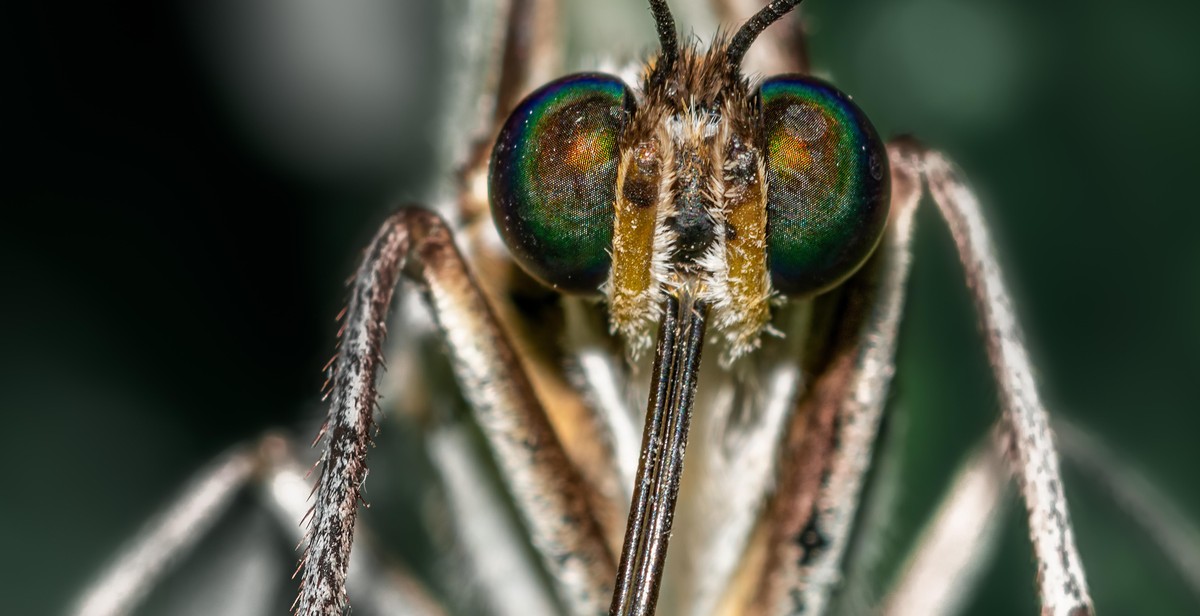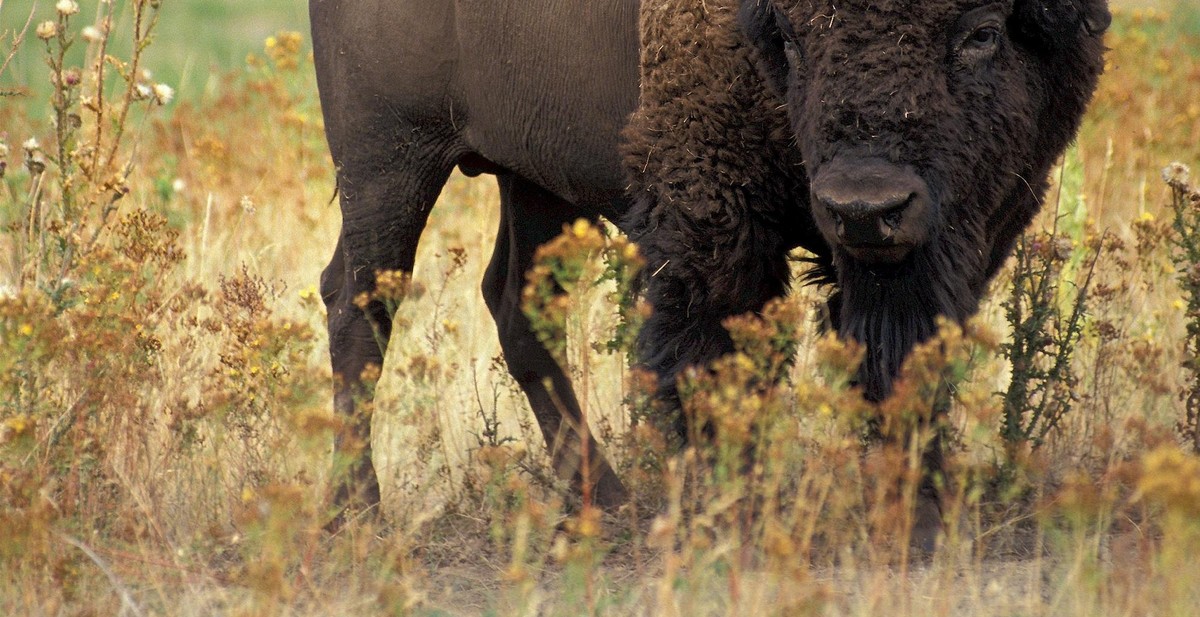How to Control Buffalo Parasites: Strategies for Effective Parasite Management
As a seasoned farmer with years of experience in the livestock industry, I have come across various challenges in animal health management. One of the most common problems that I have encountered is the infestation of buffalo parasites. Parasites are harmful organisms that feed on the blood and nutrients of animals, leading to poor health, decreased productivity, and even death in severe cases.
Buffalo parasites are a significant concern for farmers, as they can cause a range of health problems in buffalo, such as weight loss, reduced milk production, anemia, and even death. As a result, effective parasite management is critical to maintaining the health and productivity of your buffalo herd.
My Experience with Buffalo Parasites
When I first encountered buffalo parasites on my farm, I was unprepared and had no idea how to manage them effectively. I tried various treatments and remedies, but they were ineffective, and the parasites persisted. It was a frustrating experience, and I knew I had to find a better solution.
Over time, I learned various strategies for controlling buffalo parasites, which have proven to be effective. In this article, I will share my experience and knowledge with you, and provide practical strategies for managing buffalo parasites on your farm.

Understanding Buffalo Parasites
Buffalo parasites are a common problem among buffalo farmers and can lead to significant economic losses if not managed effectively. Parasites are organisms that live on or inside another organism, known as the host, and derive their nutrition from the host. There are several types of buffalo parasites, and understanding their life cycle, symptoms, and management strategies is crucial for effective parasite control.
Types of Buffalo Parasites
There are two main types of buffalo parasites: external and internal parasites. External parasites live on the buffalo’s skin and include ticks, lice, and mites. These parasites can cause skin irritations, hair loss, and reduced weight gain. Internal parasites, on the other hand, live inside the buffalo’s body and include worms, flukes, and protozoa. These parasites can cause significant damage to the buffalo’s organs, leading to reduced productivity and even death.
Life Cycle of Buffalo Parasites
The life cycle of buffalo parasites varies depending on the type of parasite. External parasites, such as ticks and lice, have a simple life cycle that involves attaching to the buffalo’s skin and feeding on its blood. Internal parasites, such as worms and flukes, have more complex life cycles that involve multiple stages of development and migration through the buffalo’s body.
For example, roundworms have a life cycle that involves the eggs being passed out of the buffalo’s body in its feces. The eggs then hatch into larvae, which are ingested by the buffalo during grazing. The larvae then migrate through the buffalo’s body to the intestines, where they mature into adult worms and lay eggs, starting the cycle again.
Symptoms of Buffalo Parasites
The symptoms of buffalo parasites vary depending on the type of parasite and the severity of the infestation. External parasites, such as ticks and lice, can cause skin irritations, hair loss, and reduced weight gain. Internal parasites, such as worms and flukes, can cause a range of symptoms, including:
- Weight loss
- Reduced appetite
- Poor growth rates
- Diarrhea
- Anemia
- Reduced milk production
- Respiratory problems
It is essential to monitor your buffalo regularly for signs of parasite infestation and to take immediate action if any symptoms are detected.
| Parasite | Symptoms |
|---|---|
| Ticks | Skin irritations, hair loss, reduced weight gain |
| Worms | Weight loss, reduced appetite, poor growth rates, diarrhea, anemia, reduced milk production, respiratory problems |
| Flukes | Weight loss, reduced appetite, poor growth rates, diarrhea, anemia, reduced milk production, respiratory problems |
| Lice | Skin irritations, hair loss, reduced weight gain |
| Protozoa | Diarrhea, reduced milk production, weight loss |
Effective parasite control involves a combination of management strategies, including regular monitoring, treatment with appropriate medications, and maintaining good herd health practices. By understanding the types of buffalo parasites, their life cycle, and symptoms, you can implement effective parasite control strategies and protect your buffalo from economic losses and reduced productivity.

Effective Parasite Management Strategies
Buffalos are prone to parasites, which can lead to significant economic losses and animal welfare issues. However, effective parasite management strategies can help control parasites and reduce their impact on buffalo herds. Here are some of the most effective strategies:
Regular Cleaning and Sanitization
Regular cleaning of the buffalo environment is essential to reduce the risk of parasites. Parasites thrive in dirty environments, so it’s essential to keep the buffalo’s living areas clean. Ensure that their barns, sheds, and grazing areas are free from manure and other debris that can harbor parasites.
Sanitization is also crucial in controlling parasites. Clean and disinfect all equipment and tools that come into contact with the buffalo, such as feeding troughs, water buckets, and grooming tools. This helps to eliminate any parasites or eggs that may be present, reducing the risk of infection.
Proper Grazing Management
Proper grazing management is essential in reducing the risk of parasites. Overgrazing can lead to a buildup of parasites, as the buffalo are forced to graze closer to the ground, where parasites are more prevalent. To prevent this, it’s important to rotate pastures regularly, allowing the grass to regrow and reducing the risk of parasites.
Additionally, avoid grazing buffalo in areas with standing water, as this can increase the risk of parasites such as liver flukes.
Strategic Deworming
Deworming is an essential part of parasite management in buffalo herds. However, it’s important to use strategic deworming to avoid developing parasite resistance. Work with a veterinarian to develop a deworming schedule based on the parasite load and the buffalo’s age and health status.
It’s also important to avoid over-reliance on deworming drugs. Instead, use them in conjunction with other parasite management strategies, such as grazing management and sanitation, to reduce the risk of parasites.
Use of Natural Predators
Using natural predators is an effective way to control parasites in buffalo herds. For example, introducing dung beetles can help break down manure, reducing the risk of parasites. Additionally, introducing birds such as chickens or guinea fowl to the grazing area can help control parasites by eating insects and parasites.
It’s important to note that the use of natural predators should be used in conjunction with other parasite management strategies for maximum effectiveness.
| Strategy | Description |
|---|---|
| Regular Cleaning and Sanitization | Keep the buffalo living areas clean and disinfect equipment and tools that come into contact with the buffalo. |
| Proper Grazing Management | Rotate pastures regularly and avoid grazing in areas with standing water. |
| Strategic Deworming | Develop a deworming schedule based on the parasite load and the buffalo’s age and health status. |
| Use of Natural Predators | Introduce dung beetles or birds such as chickens or guinea fowl to the grazing area to help control parasites. |
Implementing these effective parasite management strategies can help control parasites and reduce their impact on buffalo herds. Work with a veterinarian to develop a comprehensive parasite management plan that includes these strategies and others specific to your herd’s needs.

Conclusion
In conclusion, managing parasites in buffaloes is crucial for their well-being and productivity. Implementing effective strategies for parasite control will not only improve the health of the animals but also increase profitability for farmers.
Key Takeaways
- Parasites can cause significant harm to buffaloes, leading to reduced productivity and even death in severe cases.
- Implementing a combination of strategies such as pasture management, deworming, and vaccination can effectively control parasites in buffaloes.
- Regular monitoring and testing can help identify parasite infestations early, allowing for prompt treatment and prevention of further spread.
- Working with a veterinarian and following their recommendations is crucial for effective parasite management in buffaloes.
Remember:
Effective parasite management in buffaloes requires a proactive approach and a combination of strategies. By implementing these strategies and working with a veterinarian, farmers can ensure the health and productivity of their buffaloes for years to come.
| Strategy | Benefits |
|---|---|
| Pasture Management | Reduces exposure to parasites and minimizes infestations |
| Deworming | Eliminates internal parasites and improves overall health |
| Vaccination | Prevents infection and reduces the severity of infestations |
By utilizing these strategies and staying informed about the latest developments in parasite management, farmers can ensure the health and productivity of their buffaloes for years to come.
